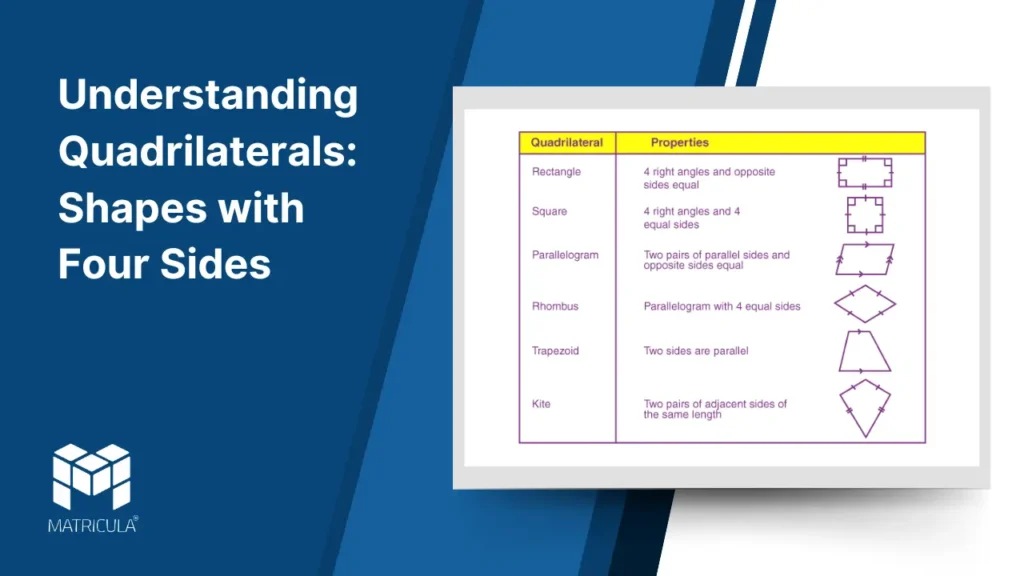Quadrilaterals are one of the most fundamental shapes in geometry. Derived from the Latin words quadri (meaning four) and latus (meaning side), a quadrilateral is a polygon with four sides, four vertices, and four angles. These shapes are ubiquitous, forming the basis of many structures, patterns, and designs in both natural and human-made environments.
Definition and Properties
A quadrilateral is defined as a closed, two-dimensional shape with the following characteristics:
- Four Sides: It has exactly four edges or line segments.
- Four Vertices: The points where the sides meet.
- Four Angles: The interior angles formed by adjacent sides.
The sum of the interior angles of a quadrilateral is always 360∘360^\circ360∘. This property holds true for all quadrilaterals, irrespective of their type.
Types of Quadrilaterals
Quadrilaterals can be broadly classified into two categories: regular and irregular. Regular quadrilaterals have equal sides and angles, while irregular ones do not. Below are the most common types:
Parallelogram:
- Opposite sides are parallel and equal.
- Opposite angles are equal.
- Examples include rhombuses, rectangles, and squares.
Rectangle:
- All angles are 90°.
- Opposite sides are equal and parallel.
Square:
- A special type of rectangle where all sides are equal.
- Angles are 90°.
Rhombus:
- All sides are equal.
- Opposite angles are equal.
Trapezium (or Trapezoid):
- Only one pair of opposite sides is parallel.
Kite:
- Two pairs of adjacent sides are equal.
- Diagonals intersect at right angles.
Diagonals of Quadrilaterals
The diagonals of a quadrilateral are line segments connecting opposite vertices. They play a key role in defining the properties of the shape:
- In a parallelogram, the diagonals bisect each other.
- In a rectangle, diagonals are equal.
- In a rhombus or square, diagonals bisect each other at right angles.
Applications of Quadrilaterals
Quadrilaterals are found everywhere in our daily lives, from architectural designs to modern technology.
Architecture and Construction: Quadrilaterals form the framework of buildings, bridges, and other structures. Squares and rectangles are particularly common due to their stability and simplicity.
Art and Design: Patterns, tessellations, and artworks often rely on quadrilateral shapes for aesthetic appeal.
Technology: Quadrilateral meshes are used in computer graphics and modeling.
Transportation: Roads, signs, and pathways often incorporate quadrilateral layouts.
Geometrical Importance
Quadrilaterals are a stepping stone to understanding more complex polygons and three-dimensional shapes. Studying their properties helps in solving problems related to area, perimeter, and symmetry, making them vital in mathematics and geometry.




